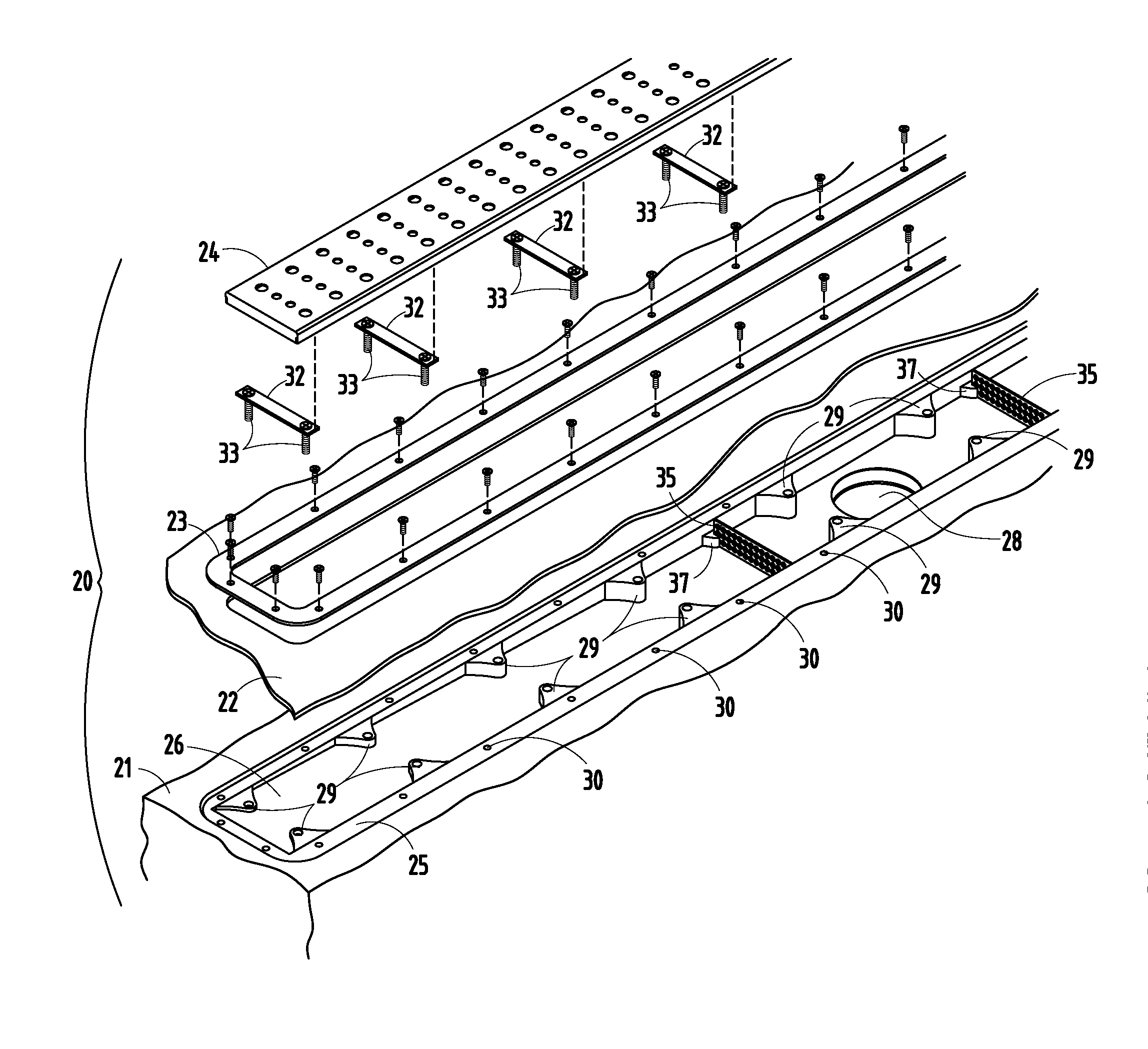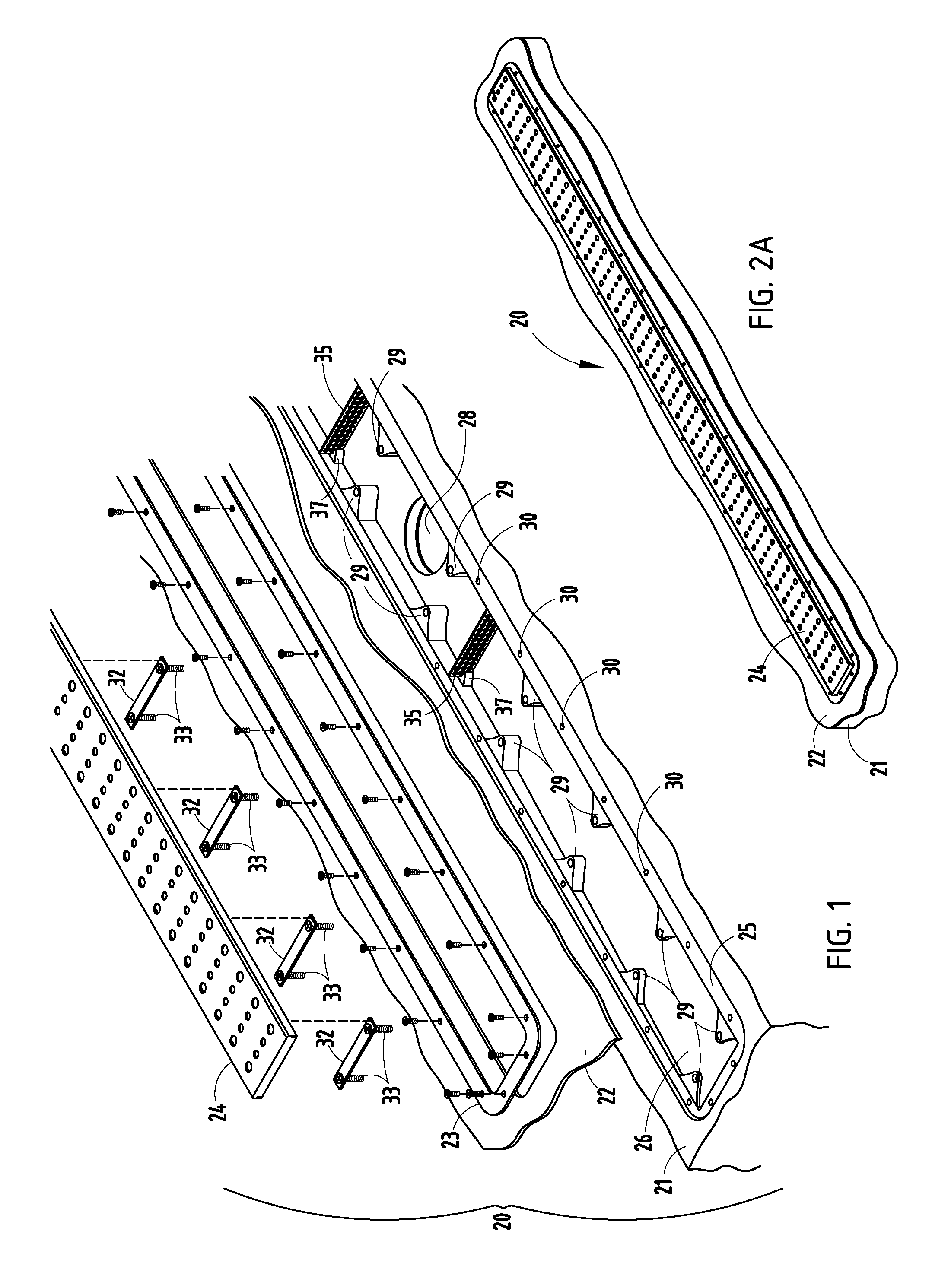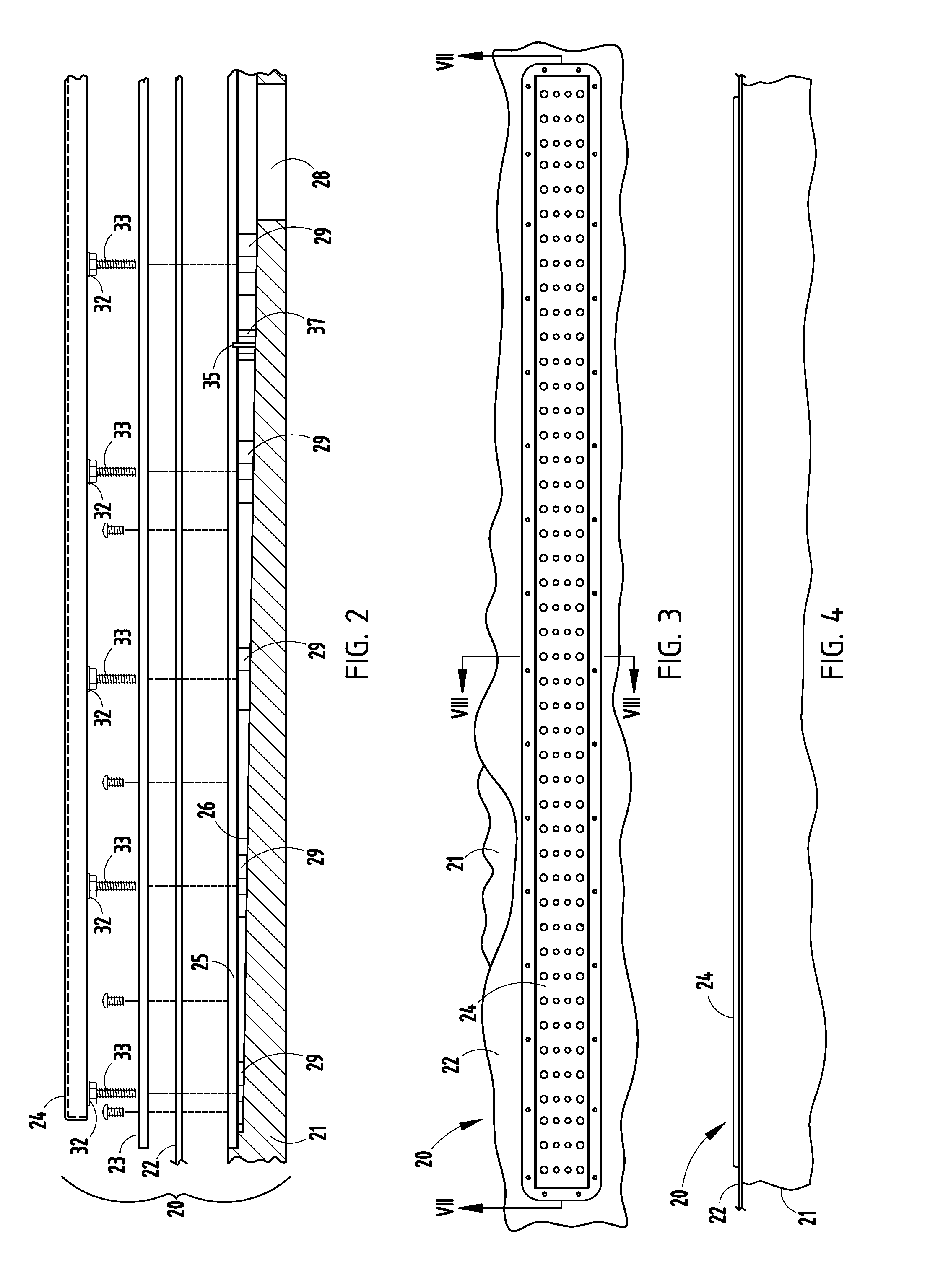Trench shower drain
a drain and shower technology, applied in sewer pipelines, metal working devices, manufacturing tools, etc., can solve the problems of tile setter virtually impossible situation, leakage problems at intersections, and tile base setting problems, so as to reduce inventory costs and tooling investment.
- Summary
- Abstract
- Description
- Claims
- Application Information
AI Technical Summary
Benefits of technology
Problems solved by technology
Method used
Image
Examples
Embodiment Construction
[0020]The present shower trench drain apparatus includes a trench body constructed from a single block of material machined to its final shape including various integral features. It is contemplated that the material will typically be selected to be a polymer such as PVC (Poly Vinyl Chloride) or ABS (Acrylonitrile butadiene styrene). A reason is because these materials are capable of being machined in addition to being compatible with common types of rigid pipe used in the plumbing industry. Further, it is noted that PVC and ABS materials are widely available in large format sheets with many available thicknesses. This allows the construction of complex design shapes by CNC machining with the only limitation being the overall dimension of the raw block. The present inventive concepts are based in part on the premise that it is far more cost effective (for manufacturing, installation, and durability reasons) to design and manufacture configurations into a block of material than it is...
PUM
| Property | Measurement | Unit |
|---|---|---|
| Flow rate | aaaaa | aaaaa |
| Height | aaaaa | aaaaa |
Abstract
Description
Claims
Application Information
 Login to View More
Login to View More - R&D
- Intellectual Property
- Life Sciences
- Materials
- Tech Scout
- Unparalleled Data Quality
- Higher Quality Content
- 60% Fewer Hallucinations
Browse by: Latest US Patents, China's latest patents, Technical Efficacy Thesaurus, Application Domain, Technology Topic, Popular Technical Reports.
© 2025 PatSnap. All rights reserved.Legal|Privacy policy|Modern Slavery Act Transparency Statement|Sitemap|About US| Contact US: help@patsnap.com



